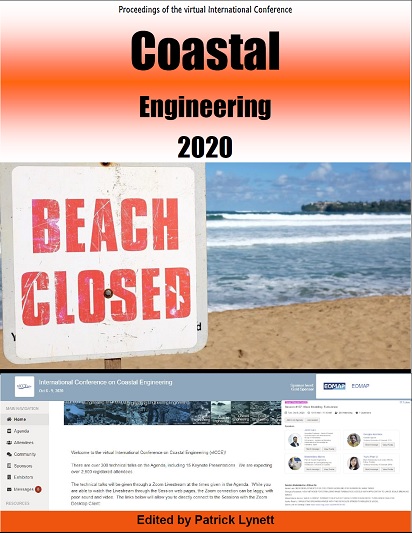Abstract
Designing tsunami-safe buildings relies on engineering codes to estimate induced loads. The only such design code, written in mandatory language is "Chapter 6 - Tsunami Loads and Effects" published recently in the ASCE 7-16 (2017). In this study, for the first time, a bore originating from a solitary wave was used to investigate the damage to an idealized structure at relatively large scale (1:5). Therefore, model tests with rigid and non-rigid structures were combined to provide a unique data set of pressure distributions and structural response. This data set could be used to model structural behavior more realistically within the Froude-Cauchy similitude.Recorded Presentation from the vICCE (YouTube Link): https://youtu.be/vVnEu9YIuQw
References
ASCE 7-16 (2017): Minimum Design Loads and Associated Criteria for Buildings and Other Structures, American Society of Civil Engineers.
MLIT (2011): Concerning Setting the Safe Structure Method for Tsunamis which are Presumed when Tsunami Inundation Occurs - Note 1318, Ministry of Land, Infrastructure, Transport and Tourism.
Park, Tomiczek, Cox, van de Lindt & Lomonaco (2017): Experimental modeling of horizontal and vertical wave forces on an elevated coastal structure, Coastal Engineering, 128, pp. 58–74.
Authors retain copyright and grant the Proceedings right of first publication with the work simultaneously licensed under a Creative Commons Attribution License that allows others to share the work with an acknowledgement of the work's authorship and initial publication in this Proceedings.

